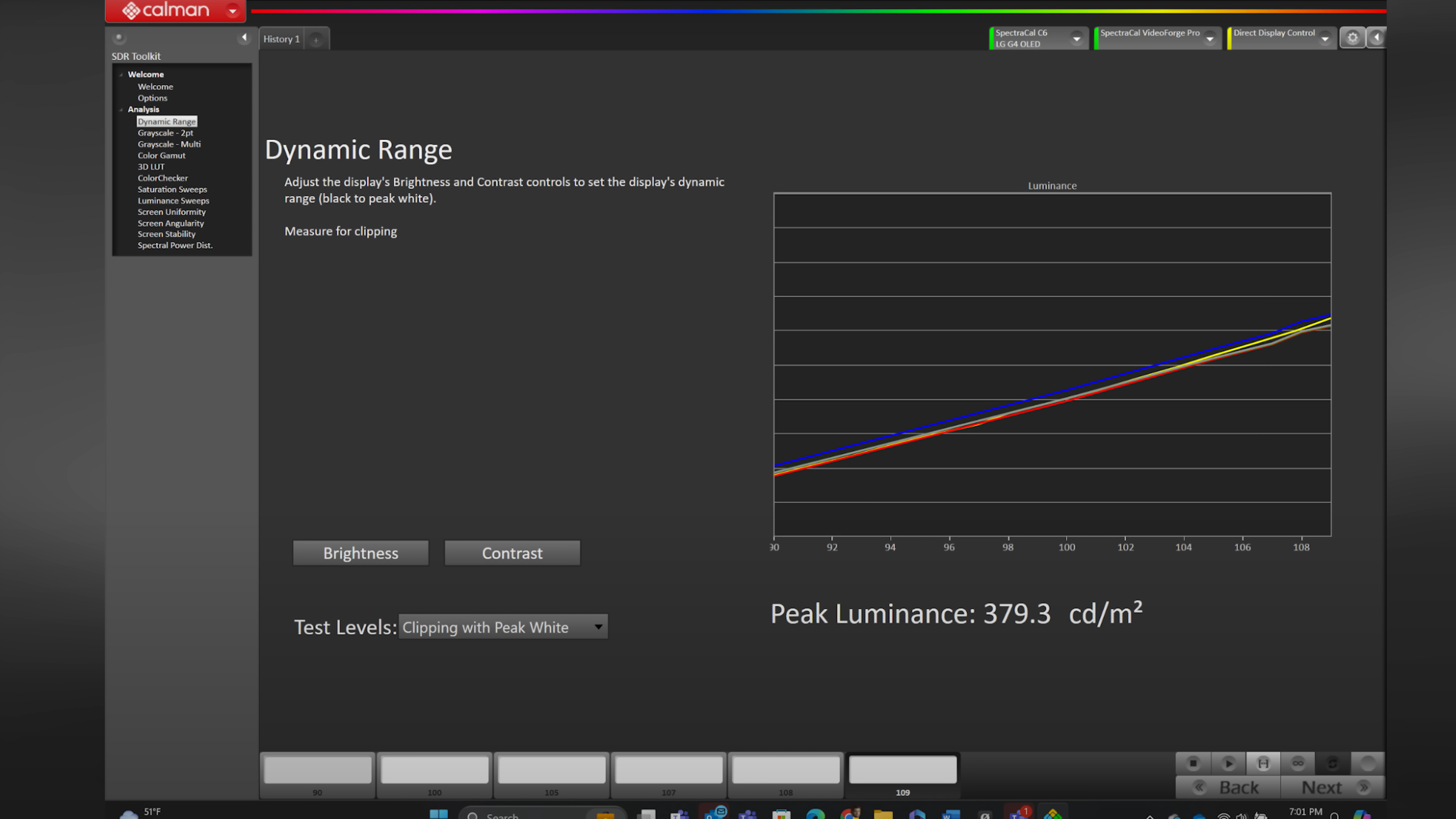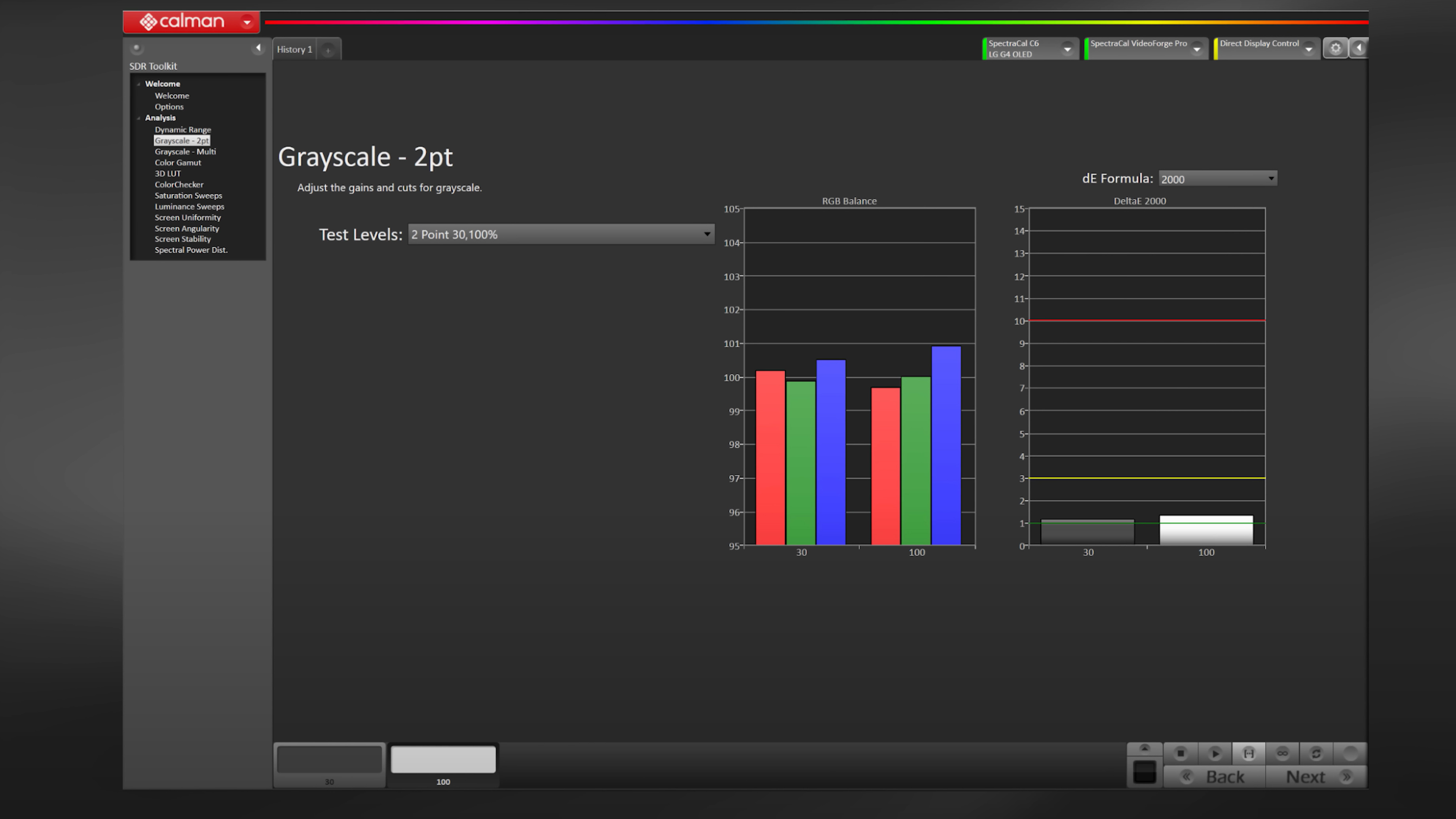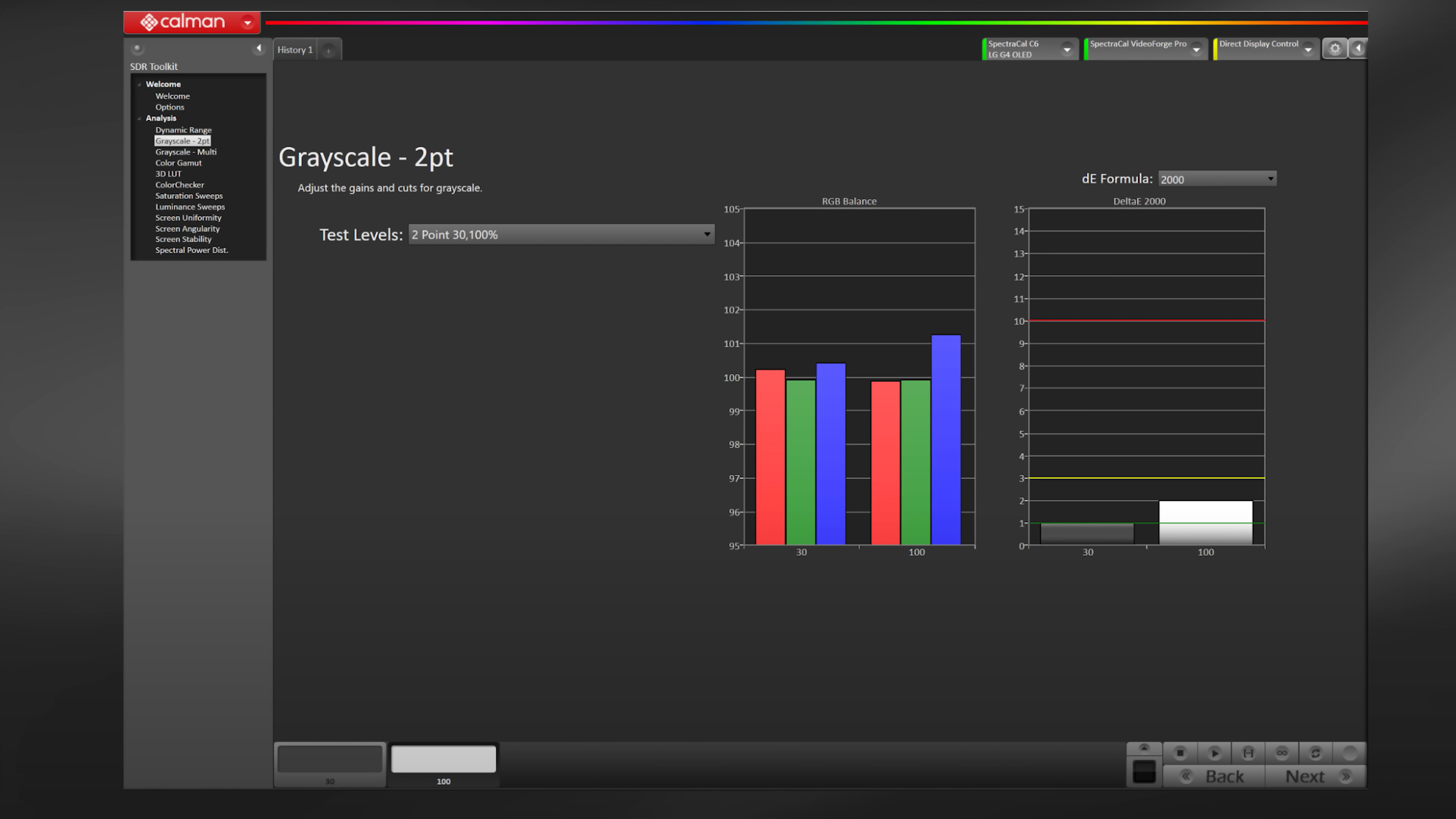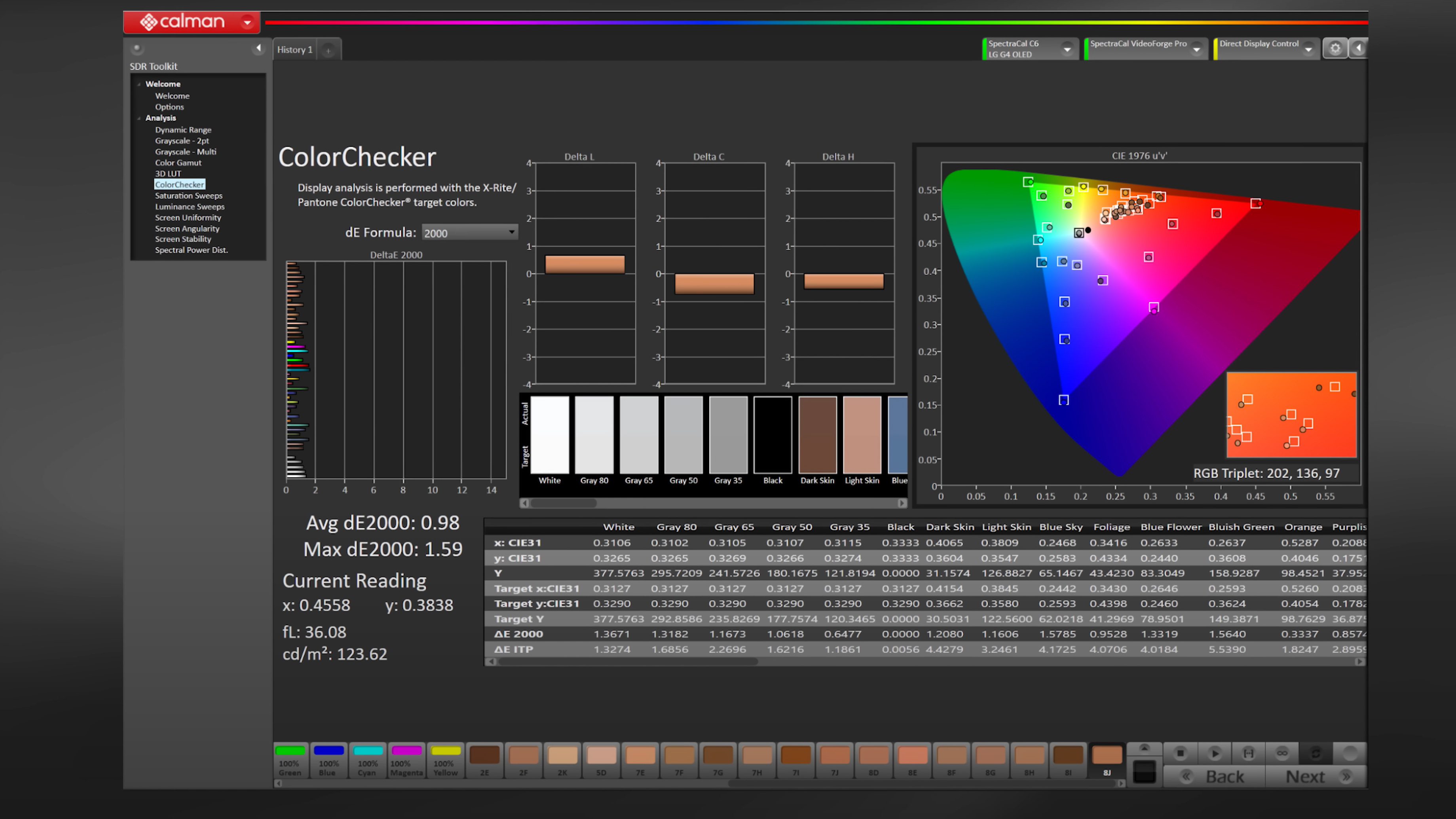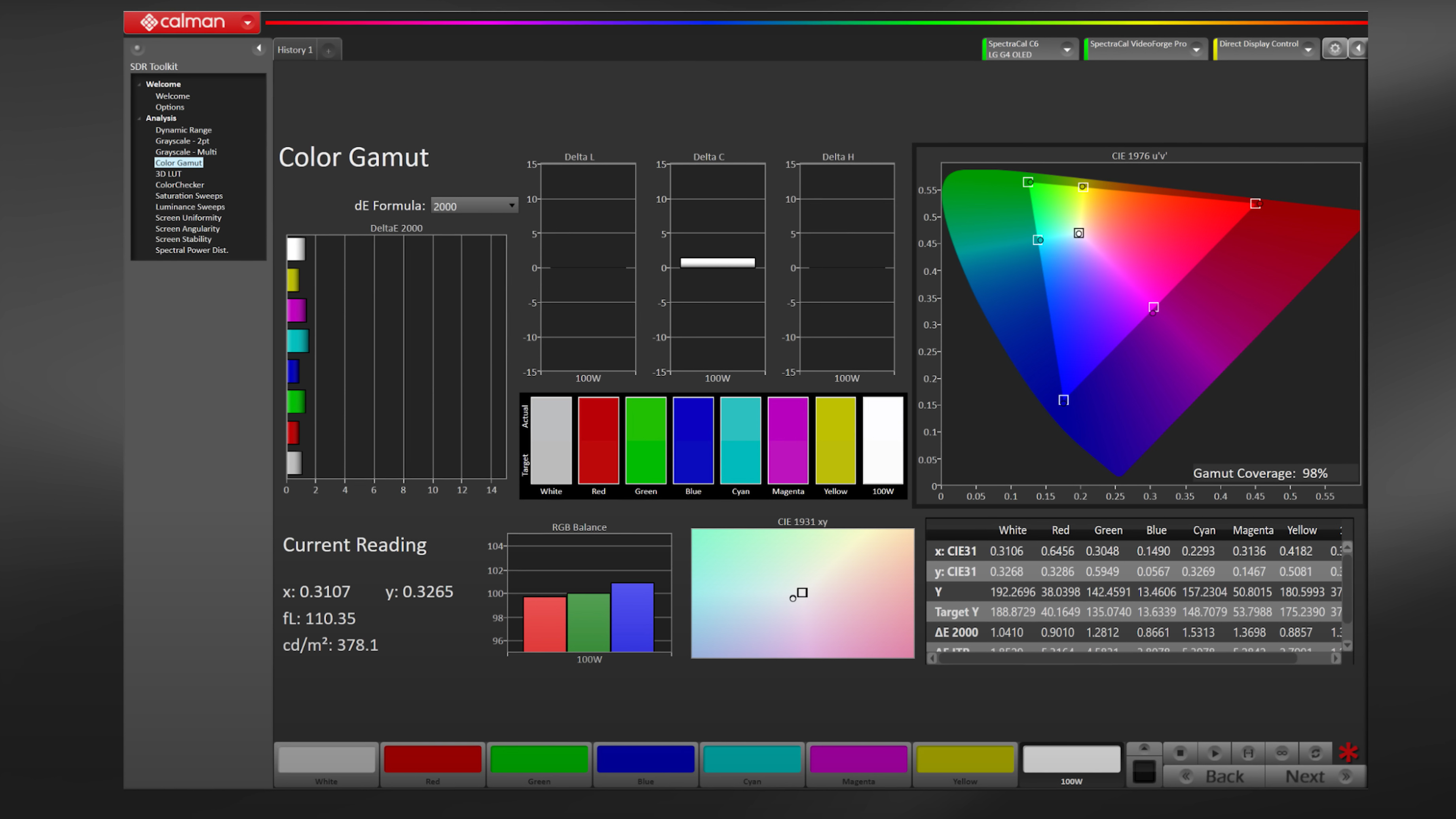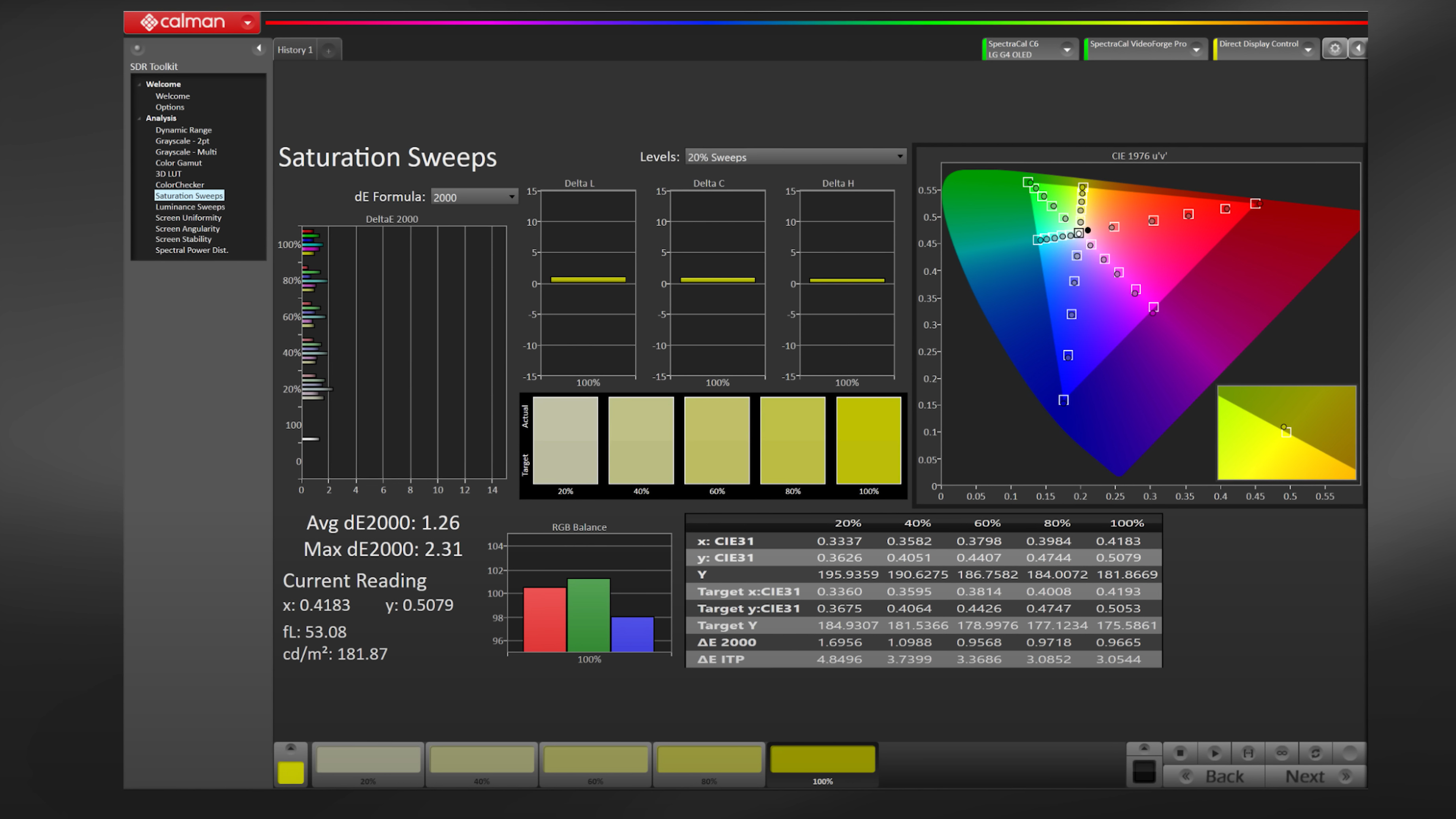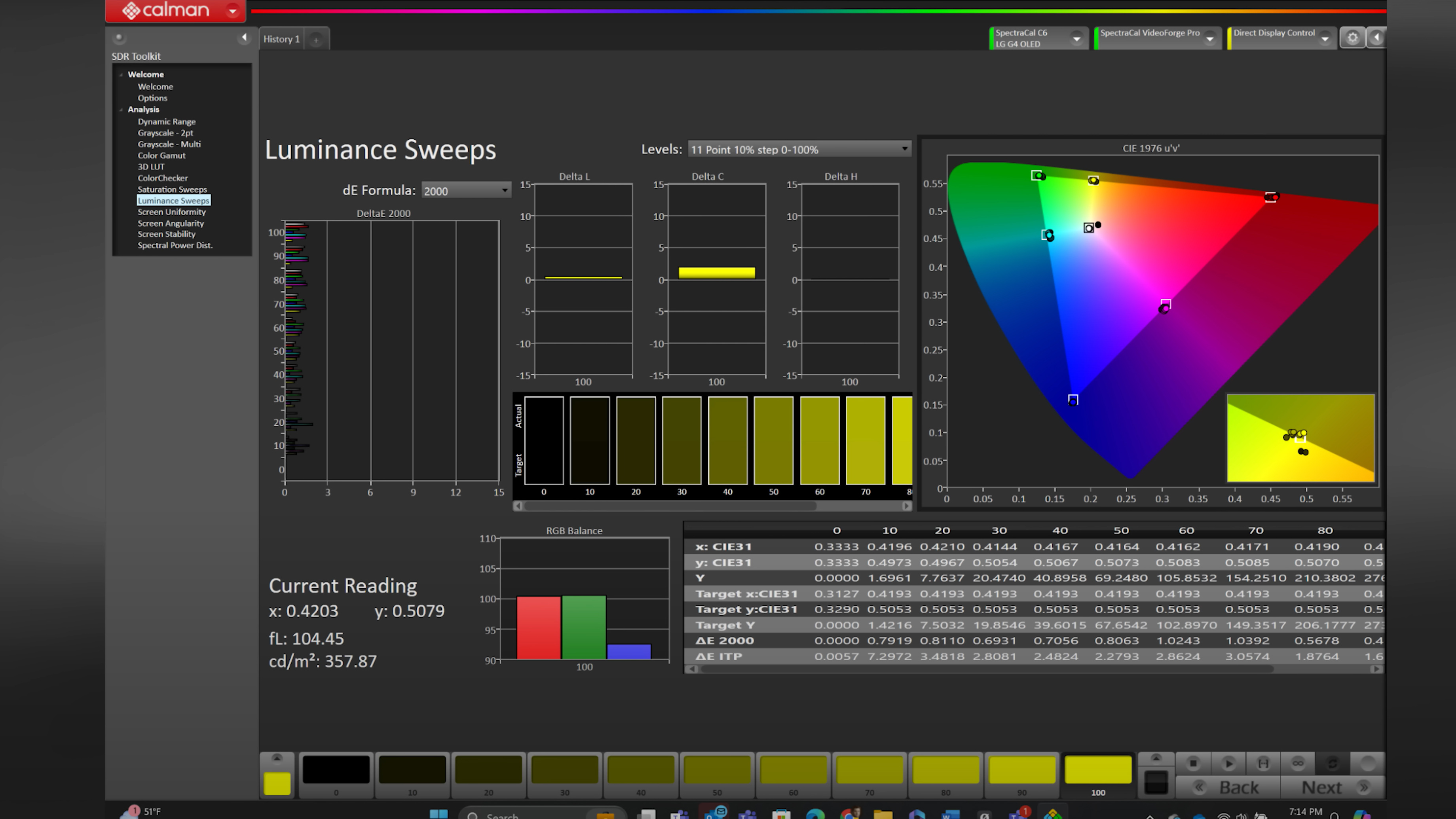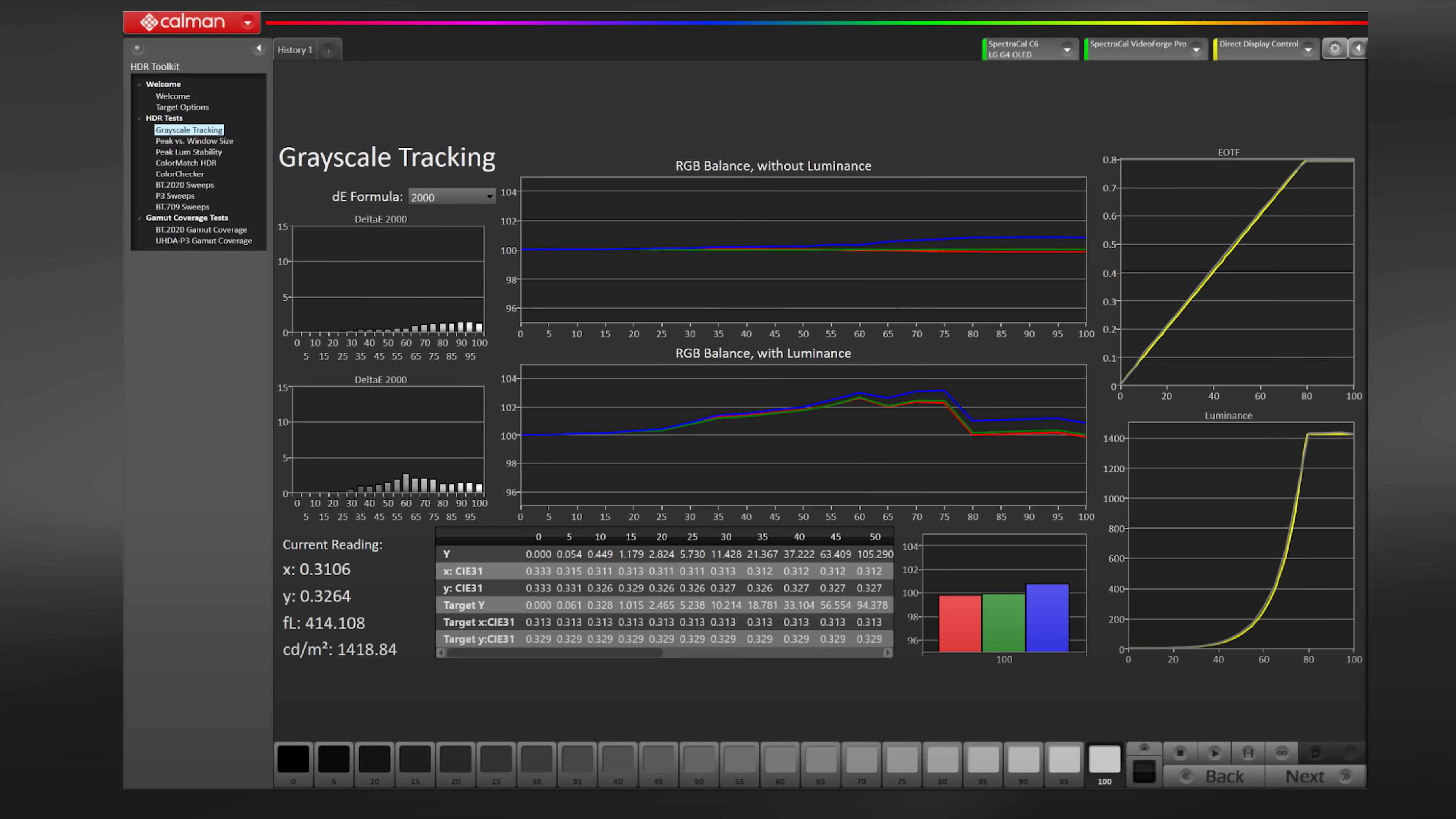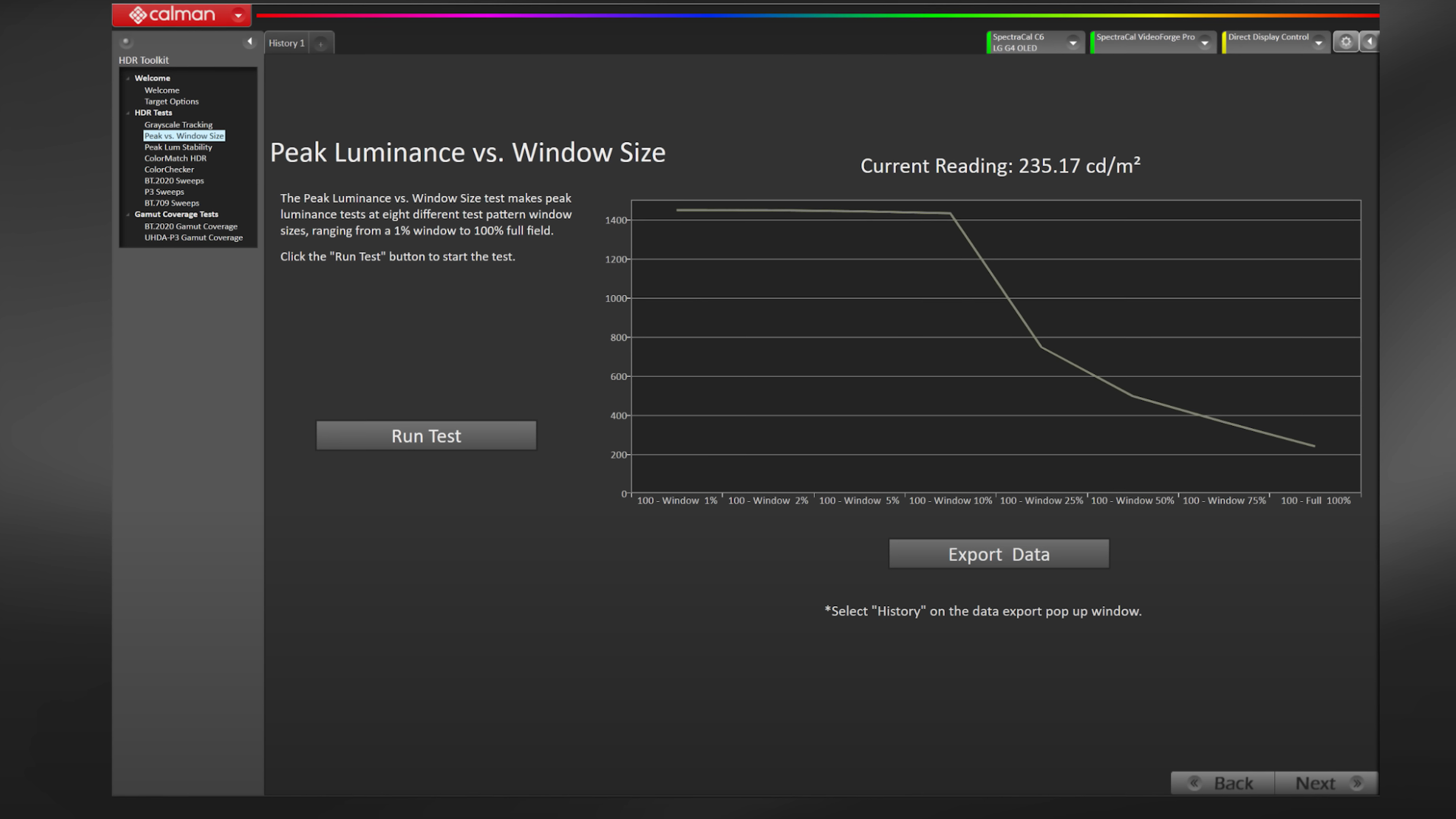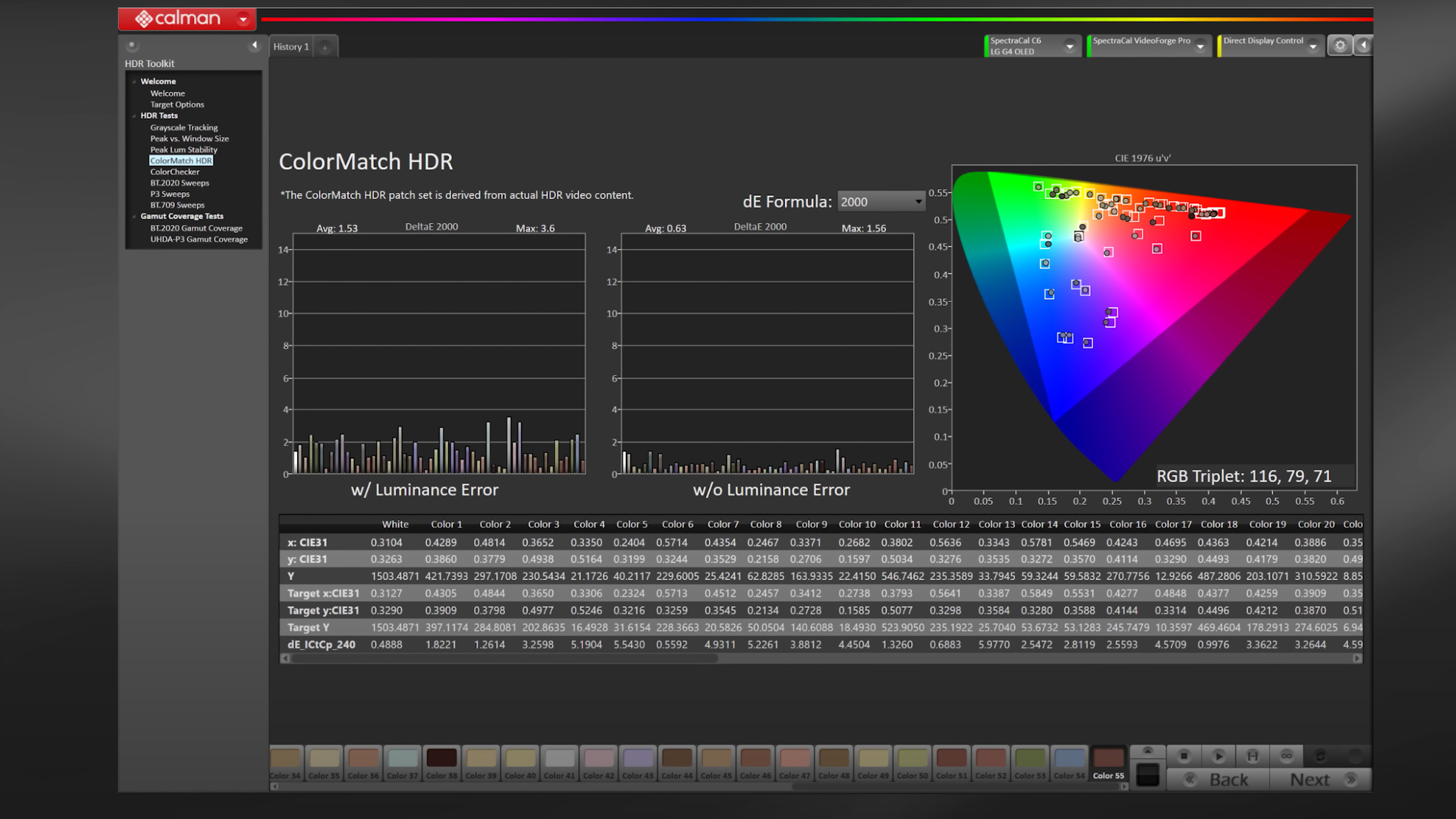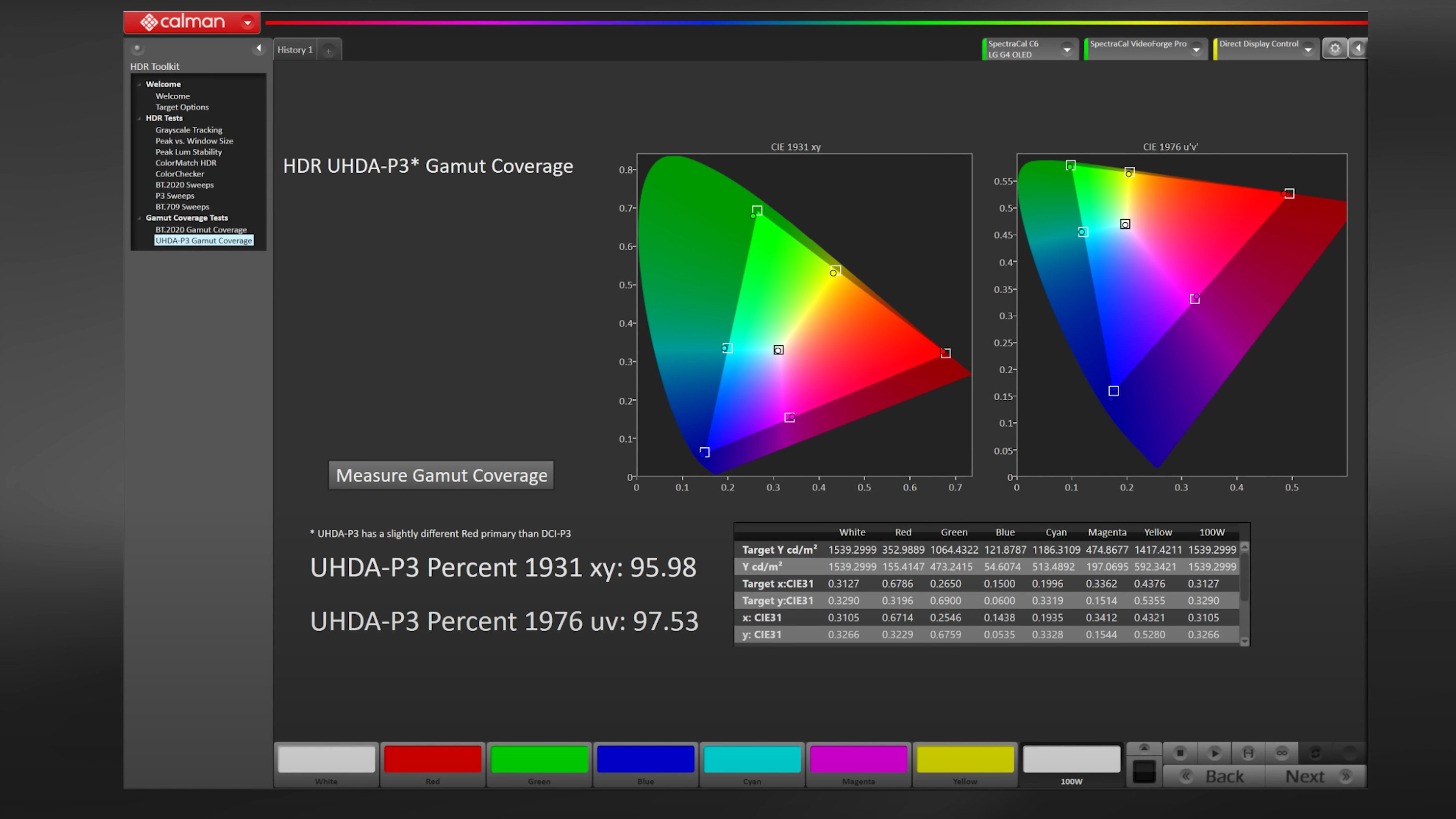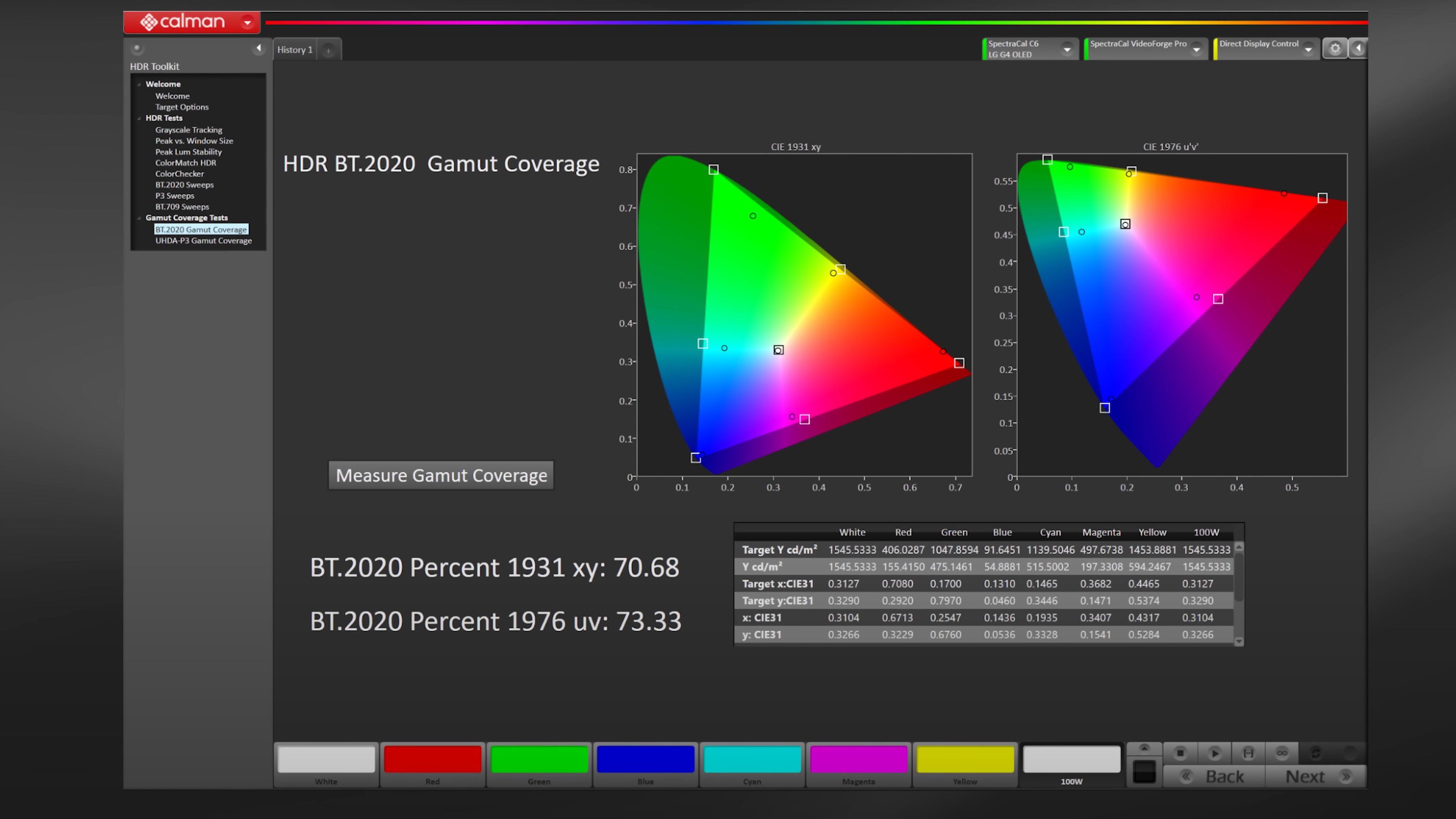- Outstanding brightness
- Astounding accuracy
- Unprecedented flexibility
- Awesome gaming performance
- Five-year warranty
- Hit-or-miss sound
- Frustrating remote
The LG G4 OLED TV is only the second TV I’ve thoroughly tested this year, but I already have zero doubt that it is a finalist for best TV of 2024. After all the comparisons and shootouts are over, I won’t be surprised if the LG G4 takes the throne. But whether it does or not, it’s already a winner, because it represents a monumental achievement for LG.
By the end of this review, you’ll understand exactly what I mean. But it should come as no surprise to many of you that the LG G4 is a gorgeous piece of gear. It has a ridiculously thin profile and a practically nonexistent metallic border — all of it beautiful and very well-built, even its new tabletop stand.
This year, the 55- and 65-inch models come with that tabletop stand in the box, a strategy shift that’s the result of LG listening to customer feedback. You still get LG’s custom Slim Wall mount included in the box for a virtually gapless installation of the 77-, 83-, and 97-inch models, however.
Sure, LG has the OLED M wireless series of this same build. But I still tend to think of the Gallery series (that’s the G part of the name, and 4 as in 2024) as LG’s flagship. And as LG’s flagship TV, the G4 has the best of everything built in. It’s got LG’s OLED evo technology, with a Micro Lens Array panel — a software and hardware combo that delivers the brightest, punchiest OLED picture available. It’s got four HDMI 2.1 inputs, with support for up to 4K 120Hz input signals with variable refresh rate, plus AMD FreeSync and Nvidia G-Sync certifications. There’s LG’s gaming dashboard, HGIG (that’s HDR Gaming Interest Group) under 1-millisecond input lag time … the list of tech acronyms goes on and on. It’s got just about everything you could want, and then some. The only thing missing is an ATSC 3.0 tuner — and I just can’t bring myself to dock it points for that.
Perhaps the most important feature, though, is the brains of the LG G4 operation — LG’s Alpha 11 AI processor. We’ll get to that in a bit.
Video review
The few sticking points
There are only two things with which I’m not just wildly in love when it comes to the LG G4. Two things. Maybe three. And they very much are a matter of subjective opinion. So, let’s just get those out of the way so we can get on with the champagne party.
One is LG’s webOS operating system. It is by no means a bad user interface. And, in fact, I appreciate that the only advertisements that do appear on it are for content you can watch. They’re not your typical display ads for other retail products. That goes a long way with me. But I’m just not in love with webOS as an operating system. It’s the little things — like the fact that the streaming apps section is comprised of the smallest tiles on the page. I think they should be the biggest thing on the page because that’s what I really want to see.

And while I appreciate tremendously frequent updates that keep the OS running smooth and the apps sporting the latest features, the app updates come so frequently that it seems like I can’t go two days without having to approve an app update before I can start watching something.
I’m also over the Magic Remote. I know it makes LG different and helps it stand out — and it’s as close as you can get to a true universal remote control these days. But it’s just not my cup of tea.

And then there’s the TV’s sound. It can be impressive in many ways, but I frequently found it frustrating more often than not. Amazingly, using LG’s AI Sound Pro feature is the best option available. But with all of the stock audio modes, I found dialoguu to be too low in loudness compared to other sounds, and it was alsodifficult to understand at times. It’s true that the audio can be impressive in its expansiveness and virtual surround effects. And it’s got some bass. I watched some segments of a couple Star Trek movies and you could feel the rumble of the ship’s engines, for sure. But the core of the sound — the fidelity — it’s just not there. OK, I’m pretty picky. It’s decent, but, believe it or not, the much less expensive Hisense U8N sounds better to me. And that’s the thing: If you spend this much money on a TV, you want it to sound really good at all times.
- 1. LG G4
But I’m willing to forgive the LG G4 all of that. I prefer to use an Apple TV box with my TVs anyway. And I almost always have at least a soundbar connected. And as for the remote, well, there’s just no way I’d want to miss out on this picture quality. So, if the great LG G4 picture quality comes with the LG Magic Remote? So be it. I’ll live, and I’ll live quite happily.
Quite possibly the best I’ve seen
So with all that said, the unmitigated truth is this: The LG G4 OLED TV more than earns every penny you spend on it with its picture quality alone. The G4 is the finest television LG has ever made, and I I’m inclined to say the LG G4 has the best picture quality I’ve ever seen.
I know — I have given similar praise to the Sony A95L OLED TV. And I’m not yet making a final determination between the LG G4 and the A95L until I’ve put them head-to-head.

But the reason I say I’m inclined to say the LG G4 has the best picture quality I’ve ever tested in a TV is because by some measures, it does things the Sony A95L simply does not do. And depending on what your preferences are for picture quality, there’s a good chance that you may prefer the G4 over the Sony A95L.
The peak brightness measurement numbers on the LG G4 are borderline meaningless.
Here’s the deal for the Nit Nerds: The peak brightness measurement numbers on the LG G4 are borderline meaningless. That’s because the test patterns we have to work with are of zero interest to the Alpha 11 AI processor, which makes all the decisions about how brightness is going to work on this TV. And it only works when there’s real content on the screen. So stay focused on the color accuracy, color gamut, the white balance — all of which you already know are going to be excellent. But the peak white measurements I’m about to get will not be telling us about how bright this TV can get.
In stock SDR Filmmaker Mode, peak brightness from a 10% window (and here’s a reminder that this doesn’t mean anything) came in at 361 nits. And that’s after turning off the eco setting. Depending on how you tweak the settings, or if you choose a different picture mode, this number can go as high as 650 nits.
Two-point white balance in SDR stock Filmmaker mode came in at exemplary levels. Delta E was around 1 for 30% and 100% stimulus. And even if you max out brightness, it holds to under 2 on the high side, which, again, is exemplary.
Grayscale is as close to perfect as I’ve seen out of the box. It’s incredible. And color primary accuracy is, again, as good as I’ve seen without calibration.
The long and short of it is that there weren’t any errors over a Delta E of 2, if they were even that high, and anything under 3 is supposedly not discernible by the human eye anyway. I’m most impressed with the low luminance color performance. This was an issue in prior years, and it appears LG solved for it. I don’t know how LG did it, but that’s an achievement worth recognizing.
NOW, in HDR: Grayscale tracking was perfect. It followed the electro-optical transfer function (EOTF) perfectly. Even at its brightest, the color temperature stayed pure. Just unreal.
The brightness measurements don’t tell us much about how bright the G4 can get.
Peak brightness (which, for a third time, I must stress means very little with this TV) was 1500 nits at various window sizes up to 10%, then down to 235 at full screen. That doesn’t really matter, though. What you need to know is that this is the brightest OLED out there, and by a not insignificant margin.
Color matching was impeccable, and even with luminance error, it was still excellent. It’s close to a reference-grade display already.
And then there’s 97.5% DCI P3 and 73% BT.2020 UV — that’s one place where we see the WRGB OLEDs coming in under QD-OLED. Though that BT.2020 color coverage still has precious little content of which to take advantage.

One more thing before we move out of the Nit Nerds section: I want to explain why it is that the brightness measurements don’t tell us much about how bright the G4 can get.
Part of the new processor and processing this TV is outfitted with involves pixel-level picture analysis. That is, the TV’s processor doesn’t just look at the full picture — it looks at every little pixel. And part of that analysis includes some very specific decisions around how brightness is applied to the picture. So, rather than break the image down into a bunch of zones and then make brightness decisions around that, the Alpha 11 AI processor takes a look at each pixel within the context of the whole image. In doing so, it is able to achieve a higher average picture level while also maintaining bright highlight detail.

So when you combine LG’s brightness booster max with the fact that you can manually adjust how the TV applies tone mapping, you can choose to make HDR content brighter than it is specified to be. Or you can choose to view it exactly as it was meant to look. This solves a pain point folks often have, with HDR content looking too dark. It also helps the TV achieve higher overall brightness — or average picture level — better than any other OLED TV I’ve tested to date.
But that processing work isn’t applied when we’re looking at white boxes on the screen in a testing scenario. It only kicks in when you’re watching actual content.
The sweeteners …
The LG G4 OLED already is the most capable and versatile OLED TV I’ve ever tested. And I’ll add that it is a significantly more capable TV than last year’s G3 OLED. So if you’re wondering if it’s worth paying more for the G4, I’d say yes. The G4 is quite an achievement and offers more revolution than evolution this year.
The LG G4 is absolutely gorgeous and is worth every cent you’ll spend on it.
And to make the G4 an even more enticing option, LG is offering a five-year warranty on the G4 — and that includes burn-in protection. So, the concern that this TV’s immense brightness capabilities could end up being a liability is significantly curtailed, knowing that if there is a burn-in issue (in spite of all the protections LG puts in place), it will be covered in the first five years of ownership. That shows a tremendous amount of confidence on LG’s part, which I think fairly translates into confidence for the owner.
Here’s why LG deserves some special acknowledgement for the achievement that the G4 OLED represents: I’ve been watching LG’s processing (which is what makes a TV look the way it does) inch closer and closer to Sony’s revered processing, year after year. And each year I’ve had to say LG is getting closer, but Sony has remained on top.

But this year is different. While LG’s best processing and Sony’s best processing each offer different versions of excellence, I have to put LG right up next to Sony now. The motion, clarity, color, detail — oh, man, that detail — LG has it all sewn up in the G4. It really is a big deal.
Because now that we have LG hitting just as hard as Sony in the processing department, I think we’re going to see each company pushing to outdo each other – and that kind of competition tends to breed innovation.
So congrats to LG for creating one of the finest consumer televisions ever made. The LG G4 is absolutely gorgeous and is worth every cent you’ll spend on it. It makes everything you watch — or play — look its absolute best. It’s better than many of you will have thought possible. And because it is an OLED, it looks good at virtually any angle, from any seat in the house.
The LG G4 is nothing short of a triumph of TV engineering.






